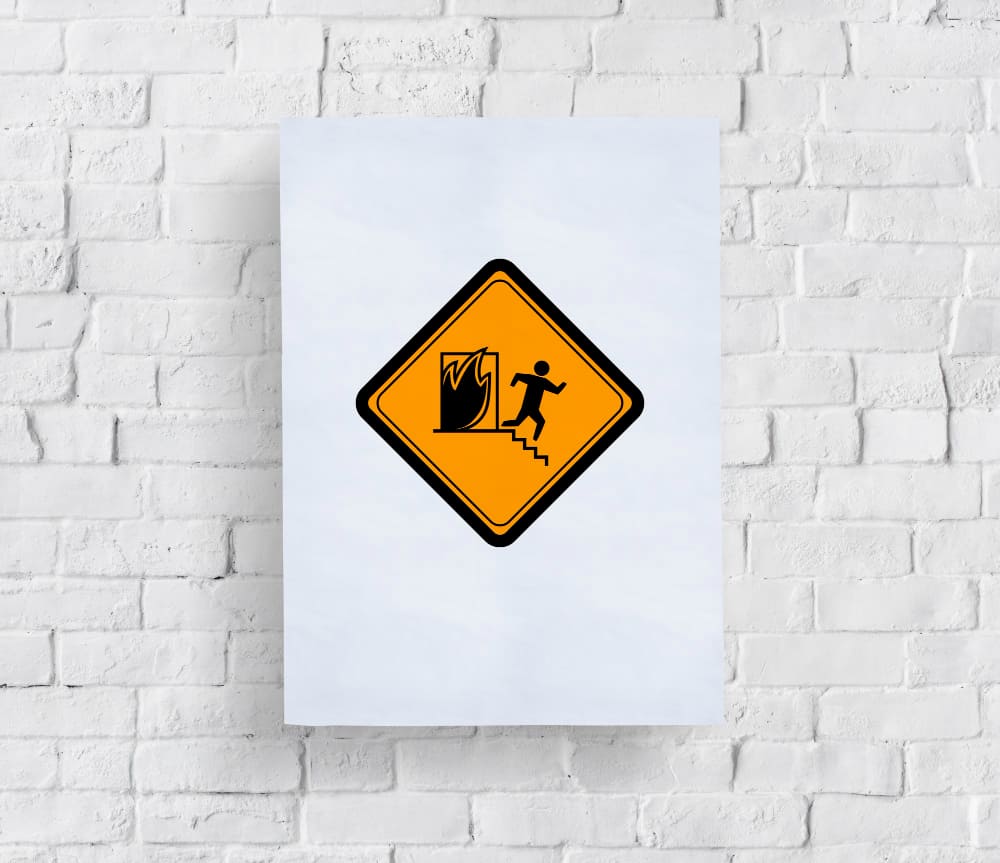In any working environment, strategically placed signs play an invaluable role in safeguarding employees. Safety signs are vital, from reminding staff to don protective gear to guiding them toward exits in emergencies. These signs, including medical safety signs, are more than just decorative pieces—they are lifesaving guides that can prevent accidents and enhance safety awareness. In industries where high-risk tasks are part of the daily routine, such as construction sites, factories, and healthcare facilities, these signs ensure that safety protocols are communicated clearly and consistently.
Types of Workplace Safety Signs
Workplace safety signs come in various forms, each serving a specific purpose to guide and protect employees:
- Mandatory Signs: These instruct employees on actions that must be taken, such as wearing personal protective equipment (PPE) like helmets or gloves. They’re crucial in settings where forgetting even one piece of equipment can lead to injury.
- Prohibition Signs: These indicate actions not permitted within a specific area. For example, a ‘No Smoking’ sign helps prevent potential fire hazards in environments where flammable materials are stored.
- Warning Signs: These alert workers to potential hazards or dangerous conditions, such as wet floors or high-voltage areas. Bright colors and clear symbols are often used to ensure they catch the eye quickly.
- Emergency Signs: During unexpected events, such as fires, these signs are crucial for guiding employees to safety. They highlight exits, fire extinguishers, and first-aid kits, ensuring that essential resources are quickly accessible.
Psychological Impact of Safety Signage
Safety signs do more than convey instructions. They affect how individuals perceive and respond to potential hazards by influencing behavior through subconscious cues. The brain quickly processes visual cues, resulting in immediate action, often before conscious thought occurs. According to the OSHA guidelines, well-designed signs meet regulatory standards and enhance the cognitive recognition of hazards. This natural response can keep individuals continually aware of their surroundings and heighten their vigilance, ultimately reducing the likelihood of workplace accidents.
The Role of Signs in Accident Prevention
Signs are a frontline defense against workplace accidents. Numerous studies have shown that clear and legible signage can drastically reduce incident rates. For instance, a study by the American Society of Safety Professionals noted that companies with a comprehensive signage system experienced fewer workplace injuries. When personnel have consistently visible reminders of safety procedures, it helps enforce compliance and fosters a culture of caution. These visual aids are constant reminders to avoid risky behavior and adhere to safety protocols, significantly reducing the chance of accidents.
Best Practices for Implementing Safety Signs
To maximize their effectiveness, businesses should adhere to certain best practices when implementing safety signs. Conducting regular workplace audits helps identify necessary signage, ensuring no critical areas are overlooked. Signs should be replaced or updated periodically to reflect changes in safety protocols or the environment. This could involve installing more reflective signs in dimly lit areas or ensuring multilingual signage in diverse workforces. It is also essential to ensure signs are visible and understandable to all employees, including those with disabilities, by incorporating braille or auditory signals where appropriate.
Technology and Innovations in Safety Signage
The landscape of safety signage is evolving with technological advancements. Digital signs offer dynamic and customizable solutions that display multiple messages sequentially, adapting to varying daily conditions. Augmented reality (AR) is emerging as an innovative tool, providing workers with interactive safety information that overlays the natural world through mobile devices or AR glasses. These innovations support traditional methods, offering a more engaging and responsive approach to delivering safety information, and are particularly beneficial in complex environments where conditions change rapidly.
Real-Life Examples of Effective Safety Signage in Action
Many examples of thoughtfully implemented signage systems have successfully enhanced safety outcomes. Consider a manufacturing plant that reduced its accident rate by 30% after incorporating obvious warning signs and digital alerts in high-risk areas. Integrating AR safety instructions at another facility helped workers understand intricate machinery setup procedures without needing physical manuals. Such examples underscore the critical role of well-planned signage in accident prevention and highlight the potential for technology to augment these systems effectively.
Conclusion: Fostering a Safer Workplace Environment
Workplace safety signs are essential components of any comprehensive safety protocol. They enhance awareness and direct behavior, creating a safer working environment. Our examples show that combining traditional and modern signage solutions can significantly enhance workplace safety. Industries must continue evolving their signage strategies to protect their workforce effectively. By doing so, they can ensure that employees are consistently aware, protected, and prepared to respond aptly in any situation.




